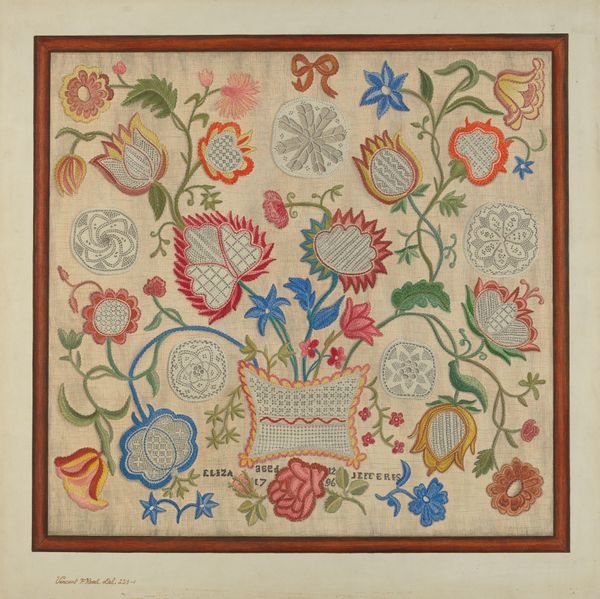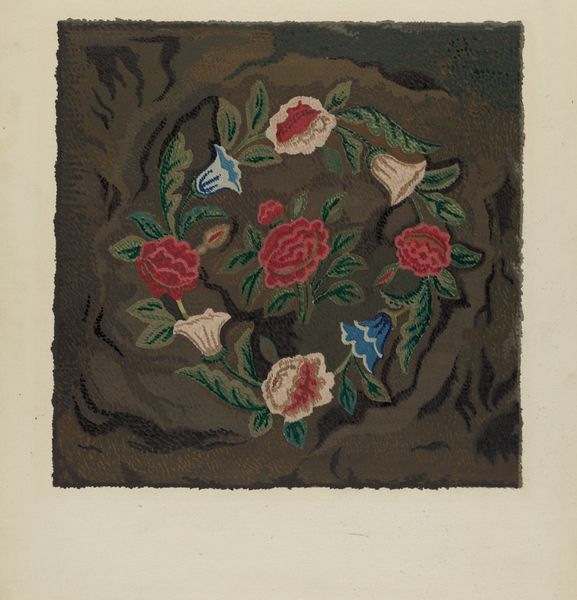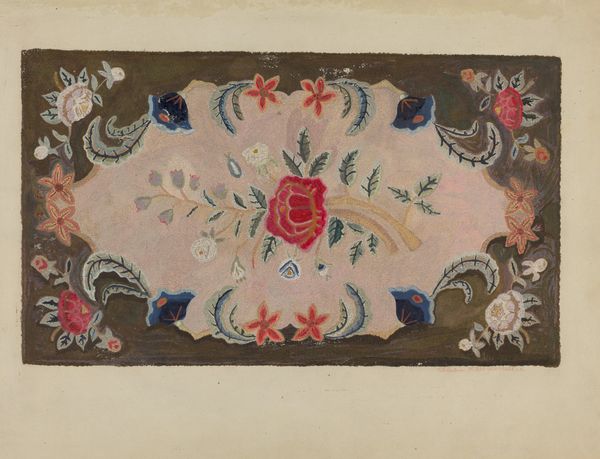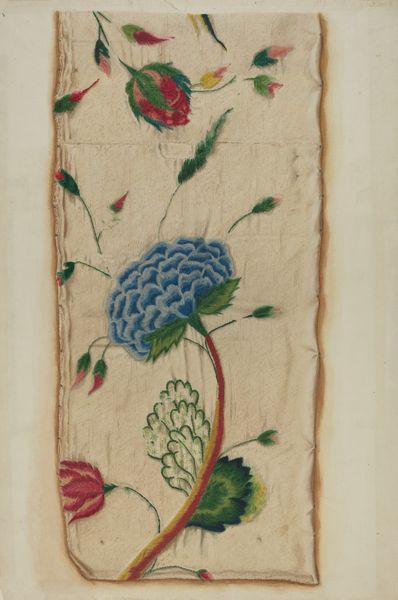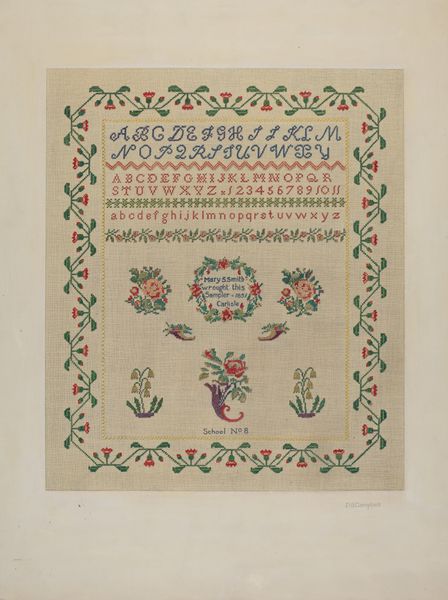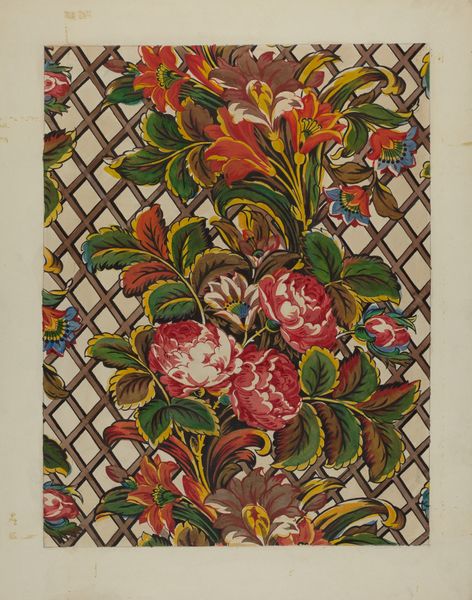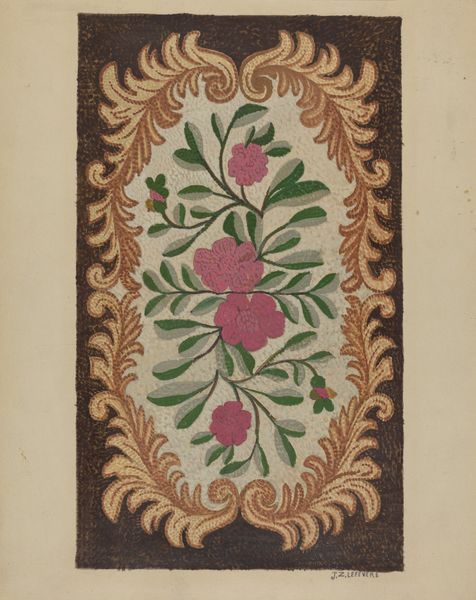
fibre-art, weaving, textile
#
fibre-art
#
weaving
#
textile
Dimensions: overall: 54 x 38.3 cm (21 1/4 x 15 1/16 in.)
Copyright: National Gallery of Art: CC0 1.0
Curator: Take a moment to observe "Crewel Embroidery," a textile work created in 1939 by John Wilkes. Its careful weaving and vibrant floral designs showcase a refined mastery of fibre-art. Editor: Okay, wow. My first thought is springtime – but a slightly off-kilter one, where the roses look like they’ve gossiped themselves into bizarre colour combinations. It’s got this almost naive charm that I strangely adore. Curator: Textiles of this kind offered a powerful mode of expression for amateur artists, especially women in the interwar years. These provided both leisure and means to connect to wider craft movements. Editor: It's funny you say "leisure" because my immediate impression is *work.* I imagine the intense concentration it must have taken to create these perfect roses and lush bouquets with yarn. There’s a tactile quality to it that almost begs to be touched! It has an incredible 3D feel that is quite captivating, given the constraints of textile art. Curator: Well, that tension you’re picking up on makes the artwork especially thought-provoking. Textiles, in particular, experienced a mid-century re-evaluation thanks to increased focus on arts and crafts. But still, what are the limitations in the eyes of art institutions, how might its identity and its recognition change over time? Editor: Absolutely. And to see textiles be used in an almost painterly fashion is refreshing. The colours and patterns mimic the strokes in impressionist paintings. I get a slight sense of humour. Curator: In addition to its artistic qualities, textiles played many roles as sites of social exchange and personal expression. Its very existence encourages further evaluation of hierarchies. Editor: Hmm, I think looking at textiles as artworks also speaks volumes about how we view women's roles in art history and how artistic value is assigned within cultural institutions. Maybe in another hundred years this art form will receive even greater prominence. Curator: A hundred years sounds about right! "Crewel Embroidery" serves as a time capsule. Its mere presence in a gallery sparks critical conversations about art, craft, history and social norms. Editor: This reminds us to embrace and interrogate even those overlooked forms that we might quickly judge—which can sometimes bloom with the most profound art, like a flower escaping from canvas.
Comments
No comments
Be the first to comment and join the conversation on the ultimate creative platform.
